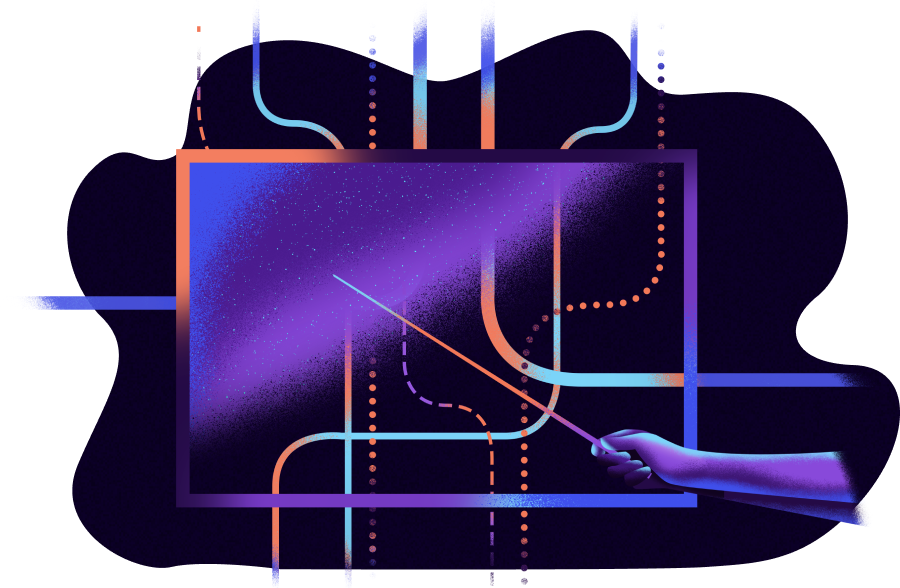Imagine, for a moment, an old house. Back in its heyday, it functioned well. The materials were solid, the plumbing worked perfectly, the roof didn’t leak. But as time goes on, things start to wear or become outdated. Plus, there are now stronger materials to be used when building walls; more efficient tools to use when repairing broken floorboards; faster ways to wire the place for electricity.
Bulldozing the house and starting over is one option. But that’s not necessarily feasible. A better option is a restoration — a modernization project that includes new innovations to improve functionality and efficiency.
Just like an old house, your company’s technological systems, software, and applications may be outdated. And it may be time for an upgrade. That upgrade is referred to as legacy modernization.
Read on to discover more about what legacy modernization is, its challenges and benefits, and the best practices for implementing a modernization project at your organization.
Legacy Modernization: What Does it Mean?
Legacy modernization is the strategic process of revitalizing outdated technologies and legacy systems. It involves taking outdated (and often older, and perhaps clunky) software and transforming it into something sleek and adaptable so it can keep up with today’s demands.
Understand that a legacy system doesn’t have to be decades old to be outdated. If your system used to help your business grow but it no longer does, then it’s a legacy system — circumstances can change because of shifts in the market, a merger, new security requirements, ending customer support, or a host of other factors. Technical debt is also a factor; priorities may shift within your organization, making it difficult to keep every system updated the way they should be. Whatever the reason, your modernization approach needs to address the problem and enhance the functionality and usability of your systems.
The modernization process leverages a variety of new technologies to achieve the end business goal, including:
- APIs: Application Programming Interfaces (APIs) enable integration and compatibility with legacy systems to modern applications, devices, and services.
- Cloud Services: Achieve scalability and flexibility by migrating legacy systems to cloud-native environments, and avoid the need to maintain on-premises infrastructure.
- Automation: Automating processes allows for smoother workflows, easier upgrades, and the ability for your team to focus on big-picture objectives that improve business growth.
- AI: Incorporating artificial intelligence can enhance decision-making processes, optimize operations, and deliver data-driven insights to encourage innovation.
The Benefits of Legacy Modernization
Bringing your company’s technology into the modern age is vital to continued success — just ask this Big Three Automaker, who used legacy modernization to scale their enterprise and unlock a billion-dollar market.
Let’s break down some of the key benefits of undertaking a legacy system modernization.
It Saves Money
One important reason to consider a legacy modernization: It’s cost-effective. Legacy systems can be expensive to run and maintain, and their less-than-optimal performance can make processes take longer and give end users a worse experience, costing your business money in the long run.
Data from IBM shows that application modernization projects can help companies secure:
- 74% lower costs on things like hardware, software, and staff
- 30-50% lower application maintenance and running expenses
- 14% boost in annual revenue
For any business leader, that kind of return on investment just makes good financial sense.
It Improves Performance and User Experience (UI)
Any modernization effort’s goal is to improve the performance and efficiency of legacy applications and technologies. This means quicker response times, ease of use by internal staff and customers, and less complaints.
Part of legacy modernization can involve revamping the user interface and experience (UI/UX). This also leads to happier customers because they’re interacting with modern and efficient technologies that make using your software seamless.
It Increases Agility
Replacing outdated technology with more flexible systems gives your entire organization increased agility. This means your company can innovate easier — experimenting with new application features, for example, or improving response times to customer complaints. It’s just one more way a legacy modernization initiative offers lasting business value.
The Challenges of Legacy Modernization
Remember the old house restoration? Many of the same challenges of restoring an old building apply to legacy modernization, too.
Budgeting
A legacy modernization shouldn’t put your company into financial debt — when you work with an experienced partner, operating costs and expenses will be factored in according to your budget. But technical debt is a very real challenge many organizations face when tackling a modernization initiative.
Technical debt happens when you opt for expedient, less-intricate solutions to problems, or prioritize features over system development or maintenance — resorting to shortcuts and sacrificing code quality in order to achieve short-term objectives. As you can imagine, this can have long-term consequences for the success of your modernization.
Reluctance to Embrace Change
Change can be hard. Whether it’s leadership, stakeholders, or your DevOps team itself, part of legacy modernization will involve clearly communicating the goals and benefits of the initiative and making sure everyone is on the same page throughout the process.
You’re probably wondering how your company can address these challenges. The answer: by choosing the proper legacy modernization strategy for the business needs of your organization.
Legacy Modernization Strategies for Success

There isn’t one single way to go about a legacy modernization. There are several options:
Encapsulation
Encapsulation involves integrating an outdated application into a newer technological framework, with minimal code modifications. This approach preserves the original system’s core functionality while effectively — and quickly — enhancing user experience and accessibility.
By encapsulating the legacy system, your organization can leverage modern technologies like cloud computing and microservices architecture, enabling advanced functionality without the risk and cost of full redevelopment. You’ll also be able to facilitate quicker upgrades, reduce operational risk, and extend the lifespan of your legacy systems.
Migration
As the name suggests, migration means migrating an existing application or system to a new environment or platform while making minimal changes to the original codebase. It typically entails transferring legacy applications to a more contemporary infrastructure, which may require moderate updates to legacy code to ensure compatibility and functionality within the new ecosystem.
Migration facilitates faster adoption of cutting-edge platform features while offering potentially lower operational costs, albeit with more substantial effort required to update and integrate legacy code to align with the new environment. Working with a partner takes the brunt of this initial effort off your plate.
System Rewrite
A system rewrite involves completely redesigning and rewriting a legacy system or application architecture from the ground up. When legacy software or systems are too antiquated to feasibly upgrade, opting for a full replacement becomes necessary. For example, you might transition from a monolithic architecture to a microservices architecture to enhance scalability, flexibility, and enable easier maintenance and deployment of new features.
This approach is the most labor-intensive, but it provides the opportunity for comprehensive modernization — and lets your company capitalize on the benefits of current technologies. It ensures your new system is built on a contemporary foundation, which gives you more long-term sustainability and lets your company adapt to evolving business needs and technological advancements.
Choosing the right method for your company means taking a hard look at your current business operations, what kind of new features or systems you want to incorporate in the modernization, and assessing the compatibility of different technology options with your existing infrastructure. The good news is that you don’t need to tackle this kind of modernization on your own.
Get Legacy Modernization Right With Focused Labs
Just like restoring that old house, bringing your enterprise’s tech up to modern standards is essential to ensure it thrives for years to come.
Legacy modernization is the process by which your organization does that, and Focused Labs is here to make the modernization journey easier. Our team of technology consultants helps your company achieve modernization to stay agile in today’s competitive environment.
Think of us as the contractor you’re relying on to handle the restoration — but without the countless delays, hidden fees, and continuing problems after we’ve handed over the reins. Focused Labs prioritizes incremental modernization through our depreciation model, so your team isn’t reliant on ours after the legacy modernization is complete.
Get in touch today to learn more about how we can modernize your company’s legacy systems, applications, and software.






